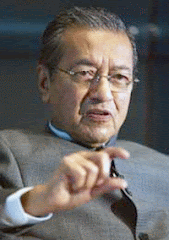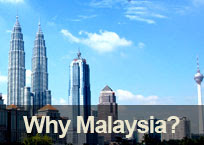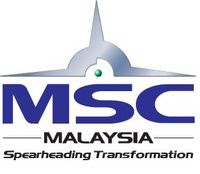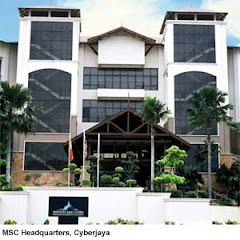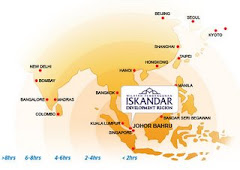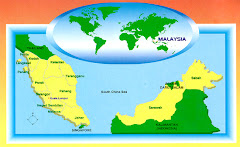Malaysia is a country on the move. From a country dependent on agriculture and primary commodities in the sixties, Malaysia has today become an export-driven economy spurred on by high technology, knowledge-based and capital-intensive industries. Continuous efforts have been pursuit to enhance the services sector, accelerate value-added of the manufacturing sector as well as boost the agriculture and agro-based sector as the third engine of growth. New sources of growth continue to be promoted and developed such as biotechnology, information and communications technology, halal products and Islamic finance. A major factor that has attracted investors to Malaysia is the government's commitment to maintain a business environment that provides companies with the opportunities for growth and profits. Foreign investors in Malaysia's can hold 100% equity for all investments in new projects. Malaysia continues to enjoy healthy surplus in the external trade, low unemployment as well as strong international reserves and high national savings. Today, Malaysia can boast of having one of the most well-developed infrastructure among the newly industrialising countries of Asia. Indeed Malaysia is developing as a knowledge-based economy, driven by human capital, innovation and ideas .Prime Minister Abdullah Ahmad Badawi launched a 51-billion-US-dollar development masterplan to spur economic growth and reduce poverty in northern Peninsula Malaysia.
 The Northern Corridor Economic Region
The Northern Corridor Economic Region (NCER) is a government initiative to boost the economy and raise income levels in the northern states of Perlis, Kedah, Penang and Perak over 18 years.
Projects and programmes to enhance human capital, infrastructure, and competitiveness in the region will involve about 177 billion ringgit public and private sector investments from 2007 to 2025,' a government statement said.
'The focus will be to turn the NCER into a modern food zone of Malaysia, increase the value-add in the manufacturing sector and strengthen tourism,' it said.
Of the 177 billion ringgit, one-third will be spent by the government, with the balance to be undertaken through private finance initiatives and private sector investments, the statement said.
'It will be led and driven by the private sector and market imperatives,' it said, adding that the masterplan aims to create half a million jobs by 2012 and one million by 2018.
The government added that financial incentives will be given to promote agricultural transformation through economies of scale.
The masterplan includes key benchmarks, with the agriculture sector expected to increase its exports to 48 billion ringgit by 2012 from 32 billion ringgit in 2005.
For manufacturing, investments are projected to jump to 24.3 billion ringgit by 2012 from 16.5 billion ringgit in 2006, while the tourism sector aims to raise average spending per visitor to 3,034 ringgit by 2012 from 1,890 ringgit currently.
Government-linked conglomerate Sime Darby, which drew up the masterplan for the
Northern Corridor, will act as project manager and investor.
The launch of the NCER comes months after the prime minister kicked off the Iskandar Development Region in southern Johor state.
Abdullah, also finance minister, has said Malaysia aims to attract 50 billion ringgit to the IDR in the next five years as part of an initiative to turn the area, 2.5 times the size of neighbouring Singapore, into a new Asian metropolis.
"We have launched the
Northern Corridor, while the Eastern Corridor as well as the Sabah and Sarawak Corridors, when they are launched, we feel that the Japanese has a very constructive role to play and Malaysia has benefited as a result of economic relations with Japan," he said.
Menjelang Pelancaran ECER - Rapatkan Jurang Timur Dan Barat
Sekian lama Banjaran Titiwangsa menjadi tembok pemisah yang mewujudkan ketidakseimbangan pembangunan antara wilayah pantai Barat dan Timur Semenanjung Malaysia.Minggu depan, tembok penghalang itu bakal "dilenyapkan" apabila Datuk Seri Abdullah Ahmad Badawi dijadual melancarkan pelan pembangunan Wilayah Ekonomi Pantai Timur (ECER) di Kuala Terengganu 29 Oktober ini.
ECER bakal melengkapkan rencana pembangunan bagi mengimbangi seluruh wilayah di Semenanjung selepas pelancaran Wilayah Ekonomi Koridor Utara (NCER) di Utara dan Wilayah Pembangunan Iskandar (IDR) di Selatan.
Nota:- Wilayah Ekonomi Koridor Utara (NCER) yang menjanjikan pelaburan sebanyak RM177 bilion dalam tempoh 18 tahun antara 2007 dan 2025 di Kedah, Perlis, Pulau Pinang dan Perak. Pelan Pembangunan Koridor Ekonomi Pantai Timur (ECER), sebuah rancangan pembangunan ekonomi mega, dijangka mencetuskan kegiatan ekonomi yang rancak dan memberi faedah sampingan yang besar di Pahang, Terengganu, Kelantan dan sebahagian daripada Johor dimana sejumlah RM112 bilion akan dilaburkan dalam Koridor Pantai Timur, dengan kira-kira 40 peratus daripadanya akan dibelanjakan bagi hubungan pengangkutan utama dan kemudahan-kemudahan prasarana penting yang lain.
Pelan induk yang dirangka oleh syarikat multinasional negara, Petronas, dilihat sebagai pembasmi kemiskinan dan pemangkin kemajuan bagi negeri Kelantan, Terengganu, Pahang dan kawasan Mersing di Johor.
Presiden dan Ketua Pegawai Eksekutif Petronas Tan Sri Mohd Hassan Marican berkata tumpuan program ialah mewujudkan jalinan perhubungan dan pengangkutan seperti pembinaan fasa ketiga Lebuh Raya Pantai Timur dari Kuala Terengganu dan Kota Bharu, fasa empat Lebuh Raya itu yang menghubungkan Kuantan ke Johor Bharu dan jalan raya menghubungkan Temerloh ke Kuala Pilah.
Walaupun negeri-negeri dalam ECER meliputi 51 peratus keluasan Semenanjung Malaysia, namun pendapatan purata isi rumah adalah yang paling rendah di Malaysia. Terengganu mencatatkan kemiskinan tertinggi iaitu 15.4 peratus, diikuti Kelantan 10.6 peratus dan Pahang 4.9 peratus.
Di bawah pelan induk ECER, sejumlah 561,000 pekerjaan akan diwujudkan menjelang 2020 dengan pelancongan dan pertanian menjadi teras di samping industri petroleum dan gas yang akan dterus dikembangkan oleh Petronas.
Antara 227 projek yang dilaksanakan di bawah ECER, sektor pembangunan yang diyakini dapat mengembangkan ekonomi masyarakat Melayu ialah penggunaan pintar ke atas rizab Melayu di Pantai Timur, dengan keluasan 40 peratus daripada tanah dalam ECER.
Inisiatif ECER adalah sejajar dengan hasrat yang dinyatakan Perdana Menteri iaitu untuk membasmi kemiskinan dan membangunkan modal insan, tegas Petronas.
Ia bertujuan menambah pendapatan hampir empat juta orang, yang mewakili 15 peratus daripada keseluruhan penduduk negara ini, bakal mewujudkan 560,000 pekerjaan baru dan menarik pelaburan berjumlah RM112 bilion dalam tempoh 12 tahun akan datang.
Pelan induk yang "memberi tumpuan kepada rakyat" dan dikendalikan Petronas ini melibatkan 227 projek dalam sektor pengangkutan, prasarana, pelancongan, pendidikan, pembuatan, minyak dan gas serta pertanian.
ECER juga bertujuan menangani ketidak seimbangan pembangunan antara pantai timur dan barat Semenanjung Malaysia serta perbezaan pendapatan antara kawasan bandar dan luar bandar dalam wilayah berkenaan.
All eyes on eastern corridor
WITH the
Iskandar Development Region (formerly the South Johor Economic Region) kicking off rather successfully, the spotlight is now on the Petroliam Nasional Bhd (Petronas)-led
Eastern Corridor Economic Region.
The eastern corridor development blueprint, which is expected to be out this quarter at the earliest, is said to be focused on the socio-economic and industrial development of the region involving Kelantan, Terengganu and Pahang.
The development of the eastern corridor, together with the northern corridor spearheaded by Sime Darby Bhd and southern corridor (Khazanah Nasional Bhd) are part of the Ninth Malaysia Plan (9MP), which has the objective of spreading economic development throughout the country.
Billions are expected to be poured into the region – RM22.3bil from Government coffers under the 9MP (which is a big 56% jump from the 8MP) and about RM40bil from Petronas' investments in O&G projects there.
"We expect the modus operandi of the eastern corridor development to be similar to the Iskandar Development Region in terms of the setting up of special bodies and institutions akin to the Iskandar Regional Development Authority and South Johor Investment Corp.
"This is to ensure smooth implementation, active engagements and balanced representation among the private and public sectors, Petronas (as the lead agency in the project), the federal and State Governments,” Aseambankers said.
So, what's new that could emerge from the Eastern Corridor Economic Region development?
"Setting up a shipyard in Terengganu’s backyard could also lead to greater economic activities, considering that there is a massive need for offshore marine vessels to support the O&G activities there.
"We also foresee further expansion at existing seaports and the centralised tankage facilities in Kertih,” Aseambankers said.
Kelantan offers ample opportunities in terms of new infrastructure requirements to support the increasing activities in the Malaysia-Thailand Joint Development Area and potential O&G discoveries offshore Kelantan.
"We favour the idea of setting up O&G infrastructure (supply base and petrochemical site) in Kelantan similar to that of Terengganu, as it is strategically located and could potentially become a regional base for Malaysia-Thailand-Vietnam O&G activities,” Aseambankers said.
It added that a new cracker plant could be built in the region as well. The development of the eastern corridor as the country's petrochemical hub is now well underway.
"The challenge would be to spearhead its growth into a leading petrochemical and O&G hub in the region by catalysing an inflow of investments in related industrial, commercial and infrastructure development,” he said.
He believes further expansion and deepening of the petrochemical hub will be the eastern corridor's core economic foundation and strategy for growth and industrial development.
Yeah expects the potential size of the investments, together with Petronas' ongoing capital investment in O&G exploration, development and production activities to rival those in the other corridors.
"Given Petronas' strong profits in recent years, an assumed 10% to 20% re-investment rate of after tax profits would result in an internal financing capacity of RM5bil to RM10bil annually,” he said.
 GOOGLE Inc.the world’s top Internet Search Engine, plans to invest in the world’s biggest server farm, which could be located in Malaysia, India or Vietnam, sources said.
GOOGLE Inc.the world’s top Internet Search Engine, plans to invest in the world’s biggest server farm, which could be located in Malaysia, India or Vietnam, sources said. In Malaysia, it may ask for an area of more than 100ha. This could be in Nilai, Negri Sembilan, which is adjacent to Cyberjaya City, a source said.
In Malaysia, it may ask for an area of more than 100ha. This could be in Nilai, Negri Sembilan, which is adjacent to Cyberjaya City, a source said. 



 The new development, valued at some SR25 billion, will reportedly create more than 20,000 new jobs in the city. The development, named ‘Knowledge Economic City’ will include the Taiba Technological and Economic Information Center, an interactive museum on the Prophet’s life, a center for studies of Islamic civilization, as well as a center for medical studies, biosciences and integrated medical services according to reports from the Saudi Press Agency, quoted in Arab News.
The new development, valued at some SR25 billion, will reportedly create more than 20,000 new jobs in the city. The development, named ‘Knowledge Economic City’ will include the Taiba Technological and Economic Information Center, an interactive museum on the Prophet’s life, a center for studies of Islamic civilization, as well as a center for medical studies, biosciences and integrated medical services according to reports from the Saudi Press Agency, quoted in Arab News.
















